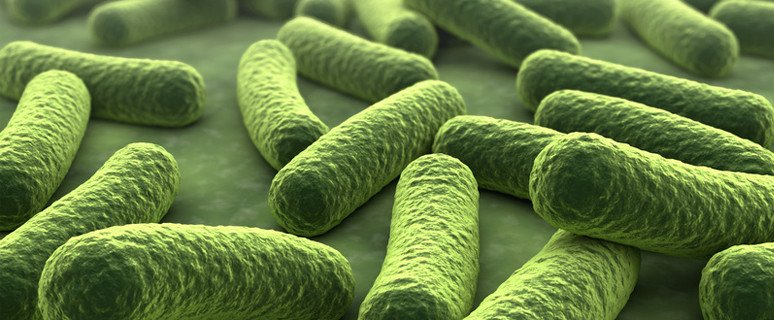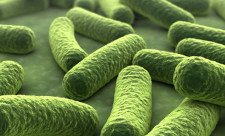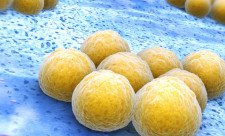
Bacteria are tiny living beings, monads (single cell microorganisms) without a nucleus. Bacteria exist in a wide variety regarding their significance, development, effect, and shape. The number of different bacterial species is estimated to be at least one million, some scientists assume there are several billion bacterial species. Usually, four different cell shapes are distinguished: There are rod-shaped Bacilli (sing. Bacillus), spherical Cocci, slightly curved rods (Vibrio), and screw or spiral-shaped Spirilla. Examples for Bacilli are the gut bacterium Escherichia coli (E. coli) and the agents for tetanus, diphtheria, and tuberculosis. Among the Cocci are pathogens which cause pneumonia and meningitis. The stomach bacteria Helicobacter is a Spirilla.
Bacteria are classified into strains. Different strains may be combined into a species and different species into a genus. Each bacterium has a genus name and a species name (e.g. Lactobacillus casei – genus: Lactobacillus, species: casei).
Bacteria are generally no longer than 10 µm. Their small size makes it possible for them to colonise almost any habitat. They provide important services on the surfaces of plants, skin (skin flora), and the mucosa as well as stomach and gut (gut flora) of animals and humans. In the soil they decompose plants into carbon dioxide and minerals, in sewage plants they are used to treat waste water. Only few bacterial species are pathogens.
See more at: https://www.gesunde-bakterien.de/bakterien/#sthash.P9OYpRrY.dpuf
Dieser Post ist auch verfügbar auf: German

 19. Jul 2014
19. Jul 2014 Popular
Popular Recent
Recent Comments
Comments












